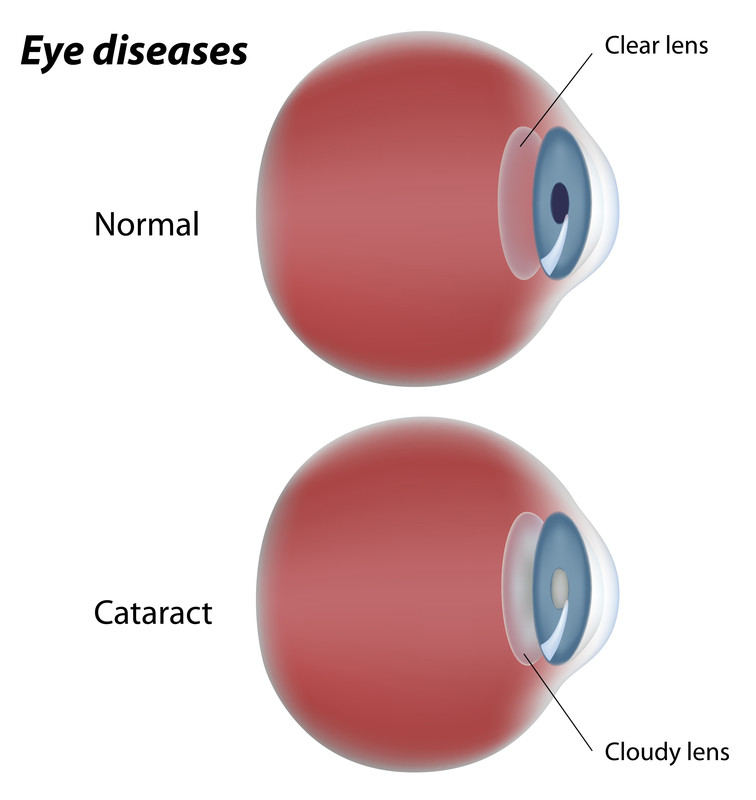
Cataract
Most cataracts are related to aging and develop slowly over the course of years. As we age, some of the protein may clump together and start to cloud a small area of the lens. This is a cataract. A cataract can occur in either or both eyes. People can have an age-related cataract in their 40s and 50s. But during middle age, most cataracts are small and do not affect vision. It is after age 60 that most cataracts cause problems with a person’s vision.
According to the Centers for Disease Control and Prevention, an estimated 20.5 million (17.2%) Americans aged 40 years and older have cataract in one or both eyes, and 6.1 million (5.1%) have had their lens removed operatively. The total number of people who have cataracts is estimated to increase to 30.1 million by 2020.
- Cloudy or blurry vision, like looking through a frosty or fogged-up window
- Colors seem faded.
- Glare – Headlights, lamps, or sunlight may appear too bright. A halo may appear around lights.
- Poor night vision
- Double vision or multiple images in one eye. (This symptom may clear as the cataract gets larger.)
- Frequent prescription changes in eyeglasses or contact lenses
Cataract is detected through a comprehensive eye exam that includes:
- Visual acuity test to determine the sharpness or clarity of the person’s reading and distance vision
- Visual field testing to determine how much side (or peripheral) vision one has and how much surrounding area one can see
- Dilated eye exam. Drops are placed in the person’s eyes to widen, or dilate the pupils. The eye care professional uses a special magnifying lens to examine the retina and optic nerve for signs of damage and other eye problems.
- Tonometry. An instrument measures the pressure inside the eye.
Vision screening is an efficient and cost-effective method to identify adults with visual impairment or eye conditions so that a referral can be made to an appropriate eye care professional for further evaluation and treatment. Vision screeners may also be used to monitor the visual performance pre- and post-cataract surgery.
Source: National Eye Institute
SUGGESTED VISION SCREENERS INCLUDE:
- Includes contrast sensitivity tests (sine-wave gratings)
- Four lighting conditions – Day and night, with and without glare
- Meets ANSI standards with unsurpassed homogeneous illumination
